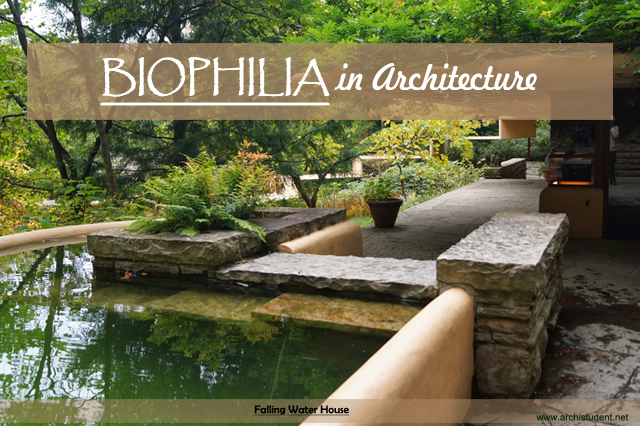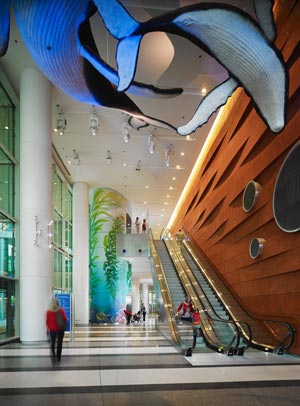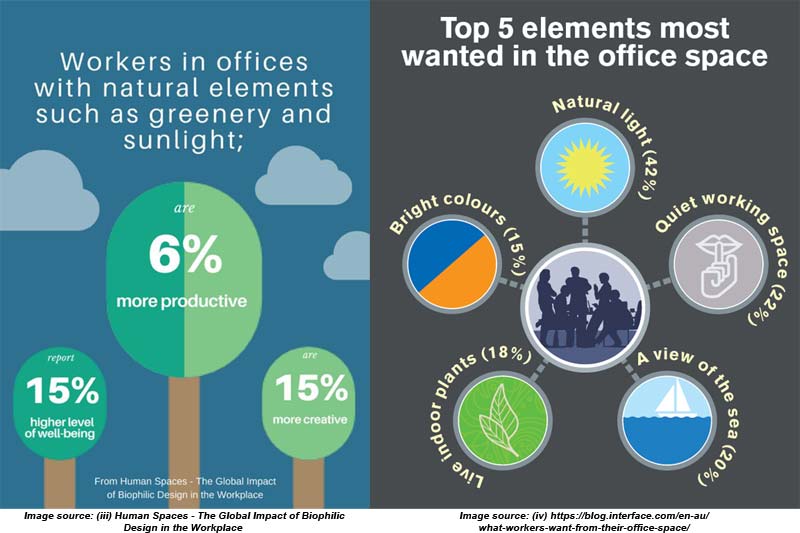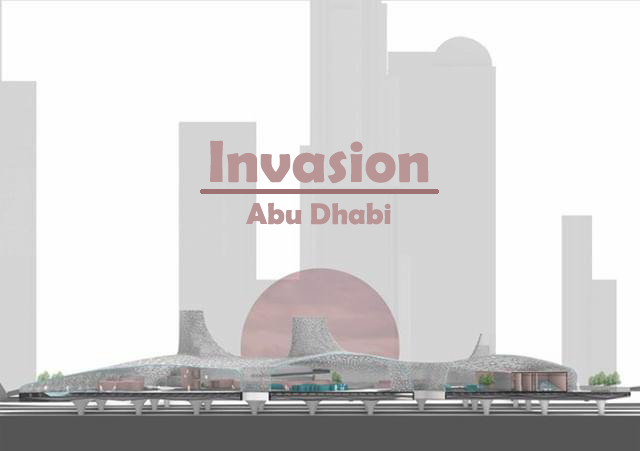
Bringing buildings to life: Biophilia in Architecture
Biophilia in Architecture
Norman Foster once described architecture as an expression of values. The way we build reflects the way we live. Over the decades, architecture has evolved through different civilizations, imbibing their essence and reflecting the vital relationship of the built environment with our surroundings. Studies reveal that Chinese architectural elements possess deep environmental and social values and can be fully understood only in relation to nature. In Hindu architecture, the concept of divinity manifests in the inclusion of five natural elements in our living spaces. This affinity for nature defines Biophilia.
Harvard biologist Edward O. Wilson argues that human beings have an innate and evolutionary based love for nature (underlining biophilia hypothesis). Design ideologies responsive to our needs while adapting to existing buildings and nature can be termed as Biophilic Design and it dictates the principle for intelligent architecture. This way of bringing the world together is new yet very ancient in its characteristics.
According to Kellert, Biophilic Design can be classified into two basic dimensions:
- Organic or naturalistic dimension refers to shapes and forms in built structures that describe our close affinity with nature through images, videos, pictures or metaphors. This can easily be translated to the shape of the building but it is not so.
- Place based or natural dimension refers to the role that building design itself and surrounding landscape plays in the concept of Biophilic Design.
These dimensions can be connected to six principles to be followed to implement biophilic design strategies.

Terrapin Bright Green, through extensive research of above mentioned and various other design theories, has simplified and defined 14 patterns of Biophilic Design in detail to assist designers with creating spaces that have a close relation with nature and surroundings.

The idea is continuous stimulation of our sensory organs with natural and nature like elements. This can be achieved through replication of natural forms, use of natural material like wood, indoor plantation, views to outside, etc. Choice of means is usually governed by factors such as the scale of the project, climate, user demographics or individual preferences. Biophilic design patterns are flexible and can be replicated to enhance the user experience under a range of circumstances. In this article, we shall discuss the advantages of implementing Biophilic Design in corporate, educational and healthcare facilities.
Biophilia in Workplace settings:
It wouldn’t be wrong to say that humans spend most of their time indoors these days. Various studies conducted on office workers in a standard set up show that about 90 percent of their time is spent indoors and only 26 percent of people manage to spend up to an hour in outdoor activity. Comparing this to an average prisoner who gets up to an hour’s activity outside, puts the gruesome situation into perspective. Biophilic Architecture has a proven impact on the productivity and wellbeing of people occupying the indoor space. A recent study conducted by a professor from the University of Queensland’s School of Psychology concludes that an office enriched by plants make staff happier and increases efficiency by 15 percent.
Human spaces conducted a study in 2014 with 3,600 office employees about what natural elements would they want to be incorporated into their offices. Amongst 4 other, natural light was the most voted for.
 Biophilia in Educational settings:
Biophilia in Educational settings:

Research shows that contact with nature can boost young people’s attention span and result in better concentration levels. For instance, optimum exposure to daylight can increase learning speed by 20-26%. As a green initiative, Benenden School in Kent, UK has an eco-classroom constructed out of sustainably harvested timber to provide a natural touch to the learning space. The classroom views out to Victorian water garden its set in. A wooden bridge spans across the pond to allow interaction with the living elements in the water body. How alive would you feel in a space like this!
Biophilia in a Healthcare setting:
In the Journal of Health Care Interior Design, Roger Ulrich, Ph.D. wrote that “ a growing amount of scientific evidence suggests that nature elements or views can be effective as stress-reducing, positive distractions that promote wellness in healthcare environments.” Surprisingly, a standard hospital room window with a calming garden view could help patients recover better, reduce their length of stay and cut down health care costs.

Ann & Robert H. Lurie Children’s Hospital of Chicago completed in 2012 include a Sky garden, sky lobby and overlook. Interior features include a freestanding oval elevator bank, suspended whale exhibit, aquarium, illuminated information desks, garden market-themed food court, healing garden, entertainment stage, and a tree house.
Architecture Biophilia works towards human health, ecology and sustainability precepts.
Some like Terrapin Bright Green has taken this a step further by defining the 14 patterns of biophilic design; while others like the WELL Building Standard and the Living Building Challenge have incorporated this as part of their certification. Many people confuse green architecture with Biophilia. They are neither completely disjointed terms nor the same. While green architecture focuses on reducing the human footprint on the environment, Biophilia connects us to the natural world through our buildings. Unfortunately, biophilia is viewed as a largely missing link in the existing approach to sustainable design. Low ecological impact spaces need to keep the occupants motivated for their long-term appreciation and application. Even though various studies clearly identify a relationship between biophilia and student engagement, biophilia and productivity, biophilia and patient recovery, what are we waiting for as designers and architects to incorporate this into our buildings!!
References
Almusaed, Amjad & Almssad, Asaad & Abdushaik, Z.K. & Khalil, S. (2006).
Biophilic architecture, the concept of healthy sustainable architecture. PLEA 2006 – 23rd International Conference on Passive and Low Energy Architecture, Conference Proceedings. I383-I386.
Architecture & Design. (2019). Features | Architecture & Design. [online] Available at: https://www.architectureanddesign.com.au/features/features-articles/biophilic-architecture-building-better-buildings-f# [Accessed 7 May 2019].
Almodovar-Melendo, J. and Cabeza-Lainez, J. (2018). Environmental Features of Chinese Architectural Heritage: The Standardization of Form in the Pursuit of Equilibrium with Nature. Sustainability, 10(7).
Freeman, K. and Freeman, K. (2019). Biophilic Design Elements Can Increase Productivity in the Workplace. [online] Work Design Magazine. Available at: https://workdesign.com/2018/09/enriching-the-workplace-with-biophilic-design/ [Accessed 7 May 2019].
Newman, P. and Soderlund, J. (2015). Biophilic architecture: a review of the rationale and outcomes. AIMS Environmental Science, 2(4), pp.950-969.
Sinha, A. (1995). Nature in Hindu art, architecture and landscape. Landscape Research, 20(1), pp.3-10.




